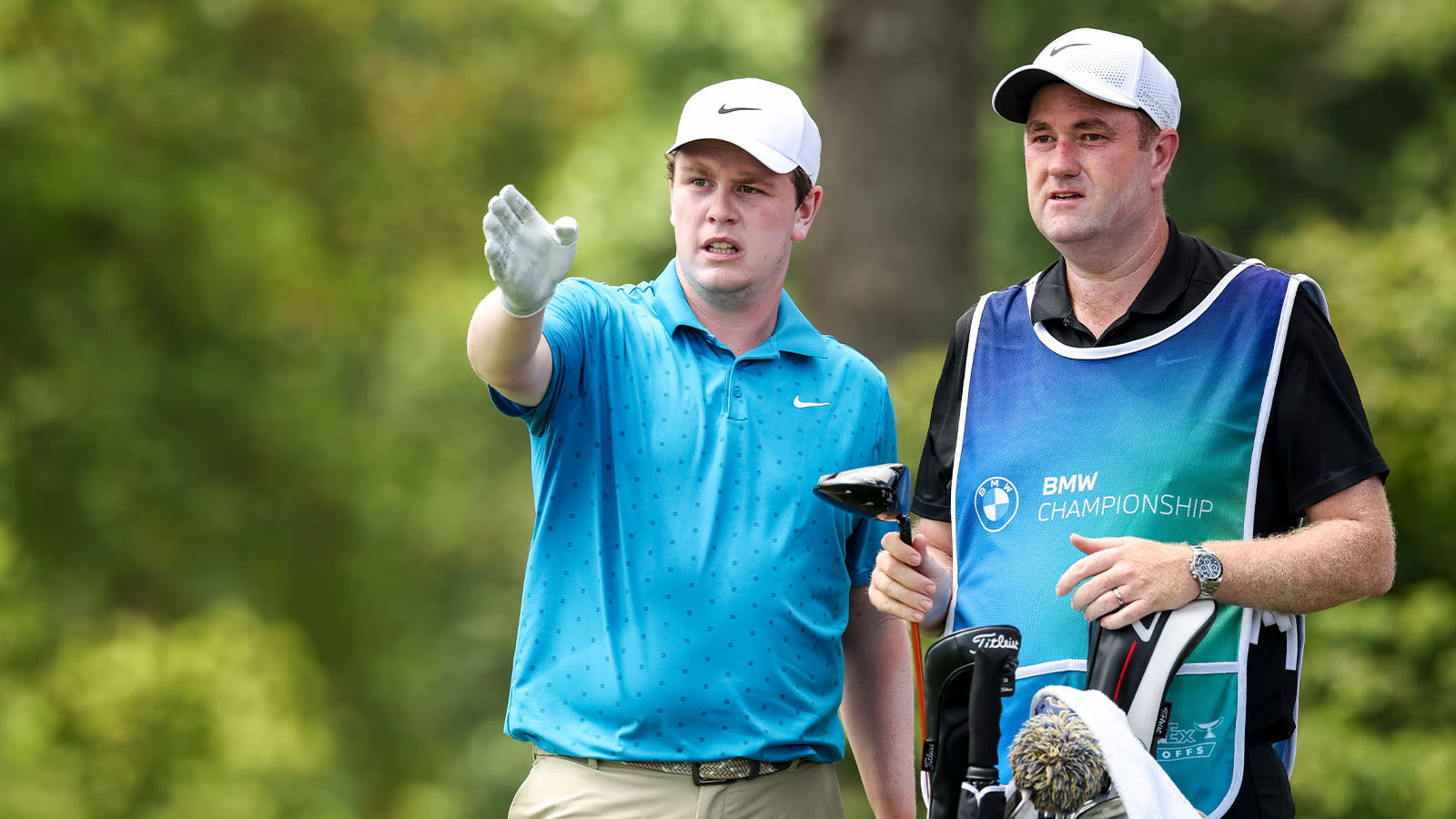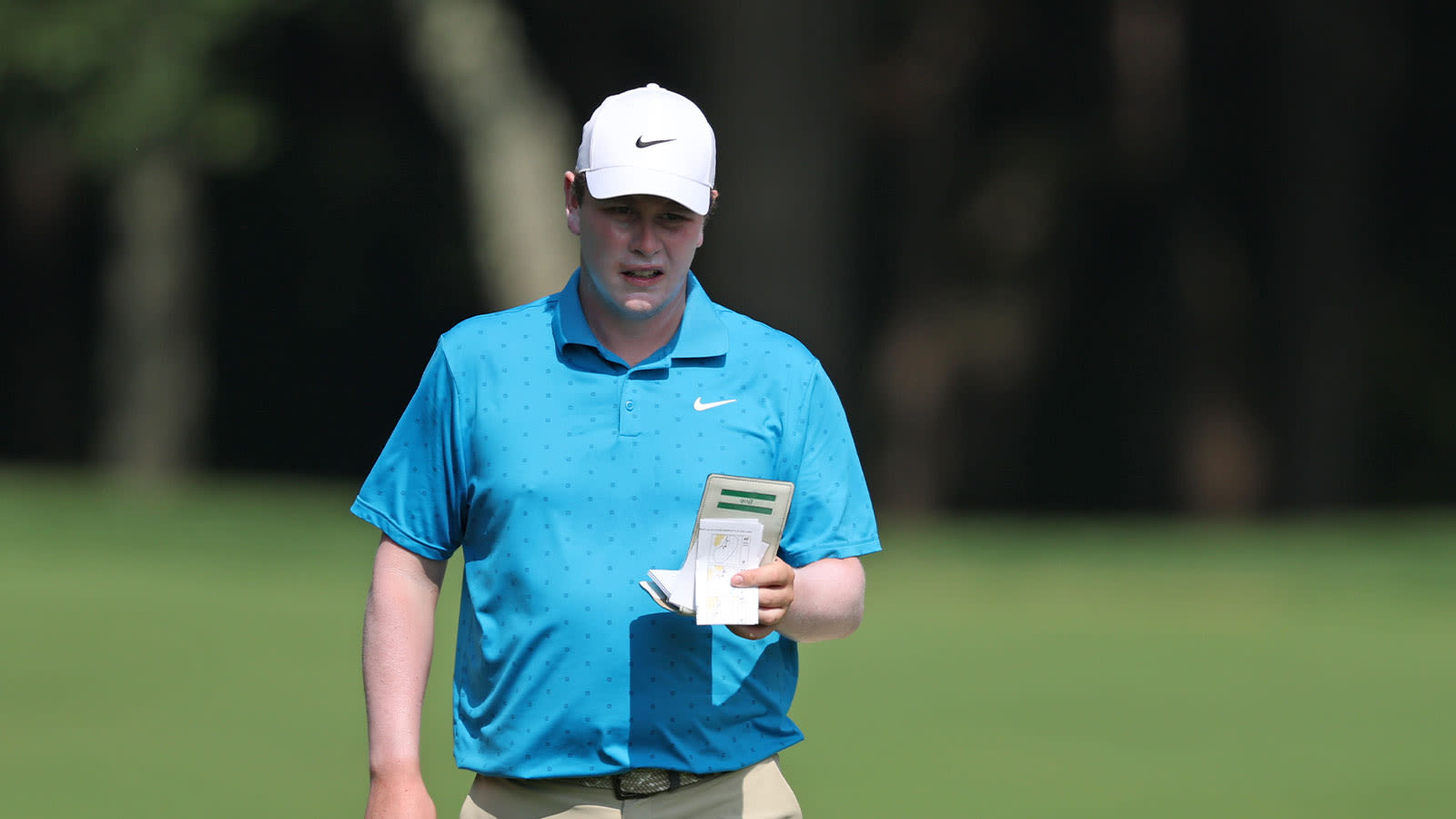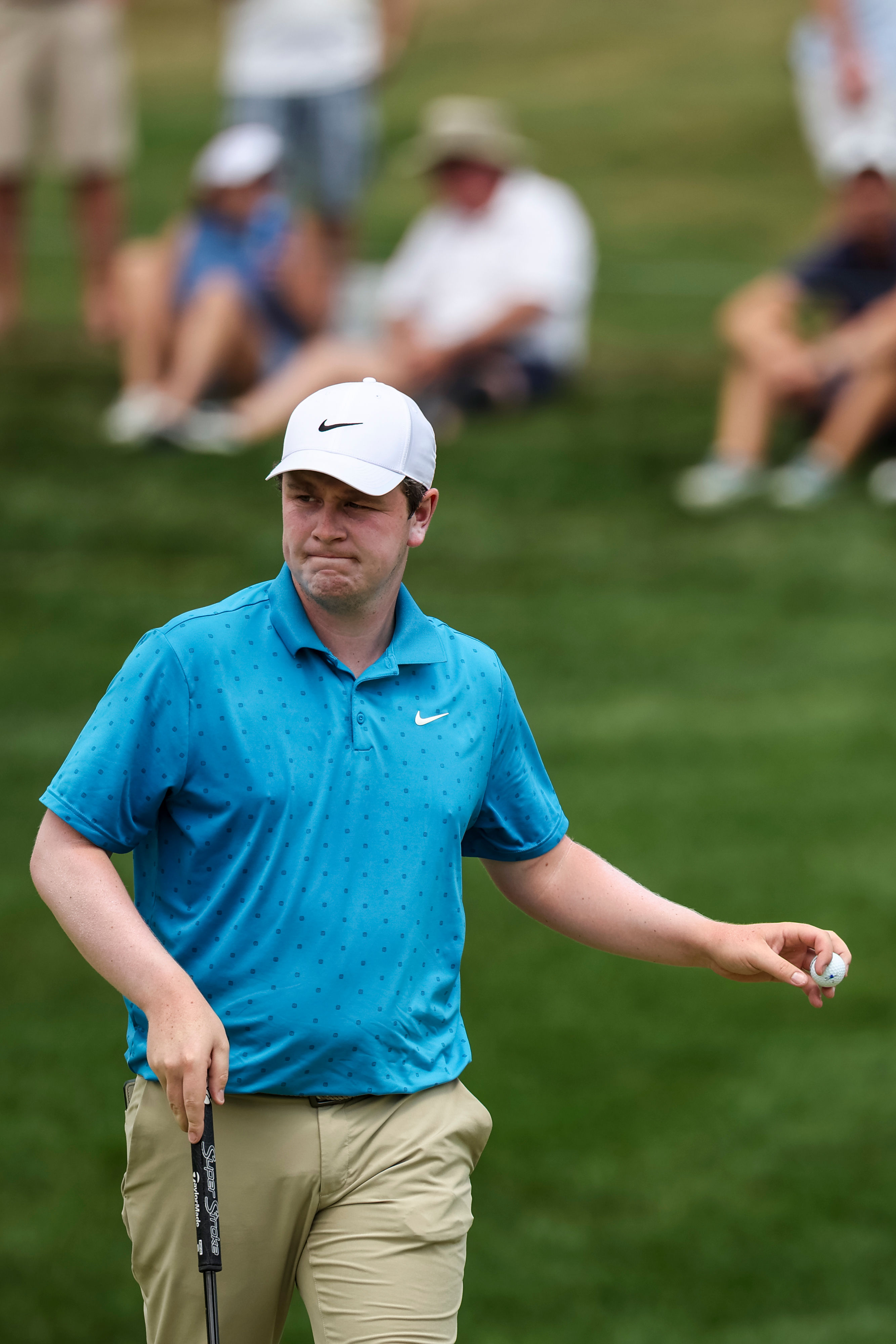Robert MacIntyre finished his opening round Thursday by draining six straight birdies at Caves Valley. Six. In a row. To close out a 62.
That birdie streak? It’s the longest to end any FedEx Cup playoff round since the format launched in 2007.
But here’s the thing about MacIntyre’s brilliance: it wasn’t some superhuman display of talent. The Scottish left-hander won with his brain, not his brawn. Smart targets. Mental toughness. A putting change that finally clicked.
Every weekend golfer can steal these moves.
1. Stop Aiming at Everything—Pick Your Safe Miss
MacIntyre doesn’t aim for the middle of fairways like weekend warriors. He maps out where trouble lurks, then picks targets that give him room to miss.

“The targets we’re picking might be right half of the fairway, knowing if I’m going to miss it, hit it short, it’s going to miss on the right side,” MacIntyre explained.
Smart targeting rules:
Identify the danger side of every hole (water, bunkers, OB)
Pick targets away from trouble, even if it means aiming at rough
Know your miss pattern — slicers should favor the left side of fairways
On approaches, choose the side of the green with the easiest recovery
Your action plan:
Walk behind each tee and spot trouble before grabbing a club
Practice on the range by aiming at specific targets, not just “somewhere out there”
Write down your typical misses for three rounds to identify patterns
2. Master the Art of Moving On
After holing a 65-foot birdie putt on the 12th, MacIntyre could have celebrated. Instead, he kept his head down and made five more birdies. That’s the mindset separating pros from club players.

His “fighting” mentality comes from embracing struggle — not avoiding it.
The mental reset system:
Bad shots happen. Period. Don’t fight reality
Create a 10-second routine after disasters: acknowledge it, take a breath, move on
Focus entirely on the next shot, not the scorecard
Remember that bogeys won’t ruin your round — but letting them affect your next three holes will
Your action plan:
Practice the reset routine during casual rounds when the stakes are low
Count how many holes your bad shots actually affect (spoiler: it’s fewer than you think)
Watch tour players on TV — notice how quickly they move on from mistakes
3. Transform Your Putting With One Simple Change
MacIntyre’s putting struggled early this season until he made a coaching change. His first-round putting gained nearly 200 feet — a massive improvement that came from finding what felt comfortable and sticking with it.

The lesson? Stop constantly tweaking your stroke.
Putting transformation steps:
Find a setup that feels natural, then commit to it for at least 10 rounds
Practice face control daily — square face beats perfect stroke every time
Master lag putting: focus on speed, not making putts
Develop an unbreakable pre-putt routine
Your action plan:
Spend 10 minutes before every round on three-foot putts for confidence
Practice lag putting from 30, 40, and 50 feet — try to get within three feet
Time your pre-putt routine and keep it identical for every putt
4. Show Up Ready to Play From Shot One
MacIntyre used to be a notoriously slow starter. His solution? Arrive ready to fire, not hoping to find it on the course.

“I’m warming up now before my rounds, stretching, doing some stuff in the gym before I play now so that when I get out there, I’m ready to go,” he explained.
Pre-round essentials:
Dynamic stretching beats static stretching for golf
Start range session with wedges, work up to driver
Hit specific targets, don’t just bash balls
End with confident shots, not technical work
Your action plan:
Arrive 60 minutes before tee time (yes, really)
Do 10 minutes of shoulder rolls, hip circles, and arm swings
Hit 20-30 range balls with purpose: pick targets and commit to shots
Finish with 10 minutes of putting: start with short putts for confidence
The Reality Check
These four lessons work because they address golf’s real challenges: poor strategy, mental mistakes, inconsistent putting, and showing up unprepared. MacIntyre’s success proves that better golf comes from better decisions, not better swings.
Pick one area. Master it over the next month. Then add another. You’ll discover that shooting lower scores has less to do with talent and everything to do with being smarter than the course — and your old habits.

